
Why Umbria?
Nestled between Tuscany, Lazio, and Le Marche, Umbria is Italy’s under-the-radar green heart. It’s where olive groves roll forever, hilltop towns feel frozen in time, and farm-to-table isn’t a trend—it’s just Tuesday. Umbria doesn’t shout. It whispers. And if you’re the kind of traveler who’d rather follow a truffle hunter through the woods than queue up at a tourist trap gelateria, this region is for you.
We tapped local experts, chefs, winemakers, and some very charming nonnas to build this guide.
Here’s everything you need to see, eat, sip, and experience to get under Umbria’s skin.
🎯 Must-Have Experiences in Umbria

1. Truffle Hunting in the Umbrian Hills
Go with a local truffle hunter (and their adorable dog, obviously) into the forests around Norcia or Spoleto. It’s earthy, mysterious, and ends with a truffle pasta lunch. Win-win.
Pro Tip: Book through a local agriturismo for the most authentic experience. Bonus: they usually include a wine tasting.
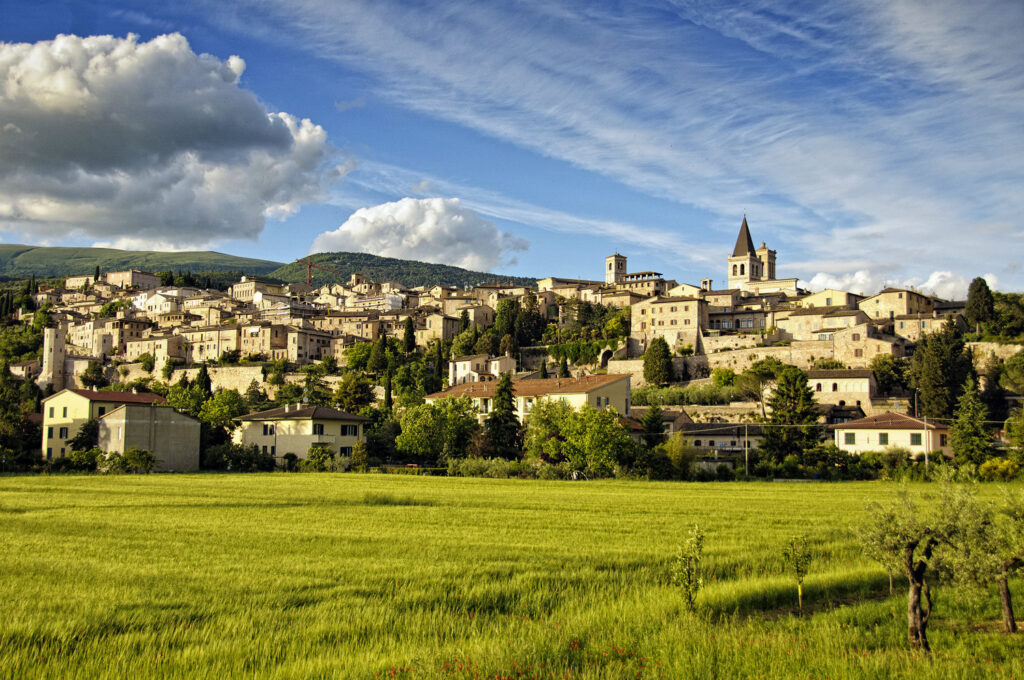
2. Live the Slow Life in Spello
This flower-strewn hill town is basically Umbria in Instagram filter form. Visit in June during the Infiorata festival when the cobblestone streets turn into giant floral carpets.
Do: Rent a bike and cycle the olive oil route between Spello and Assisi.
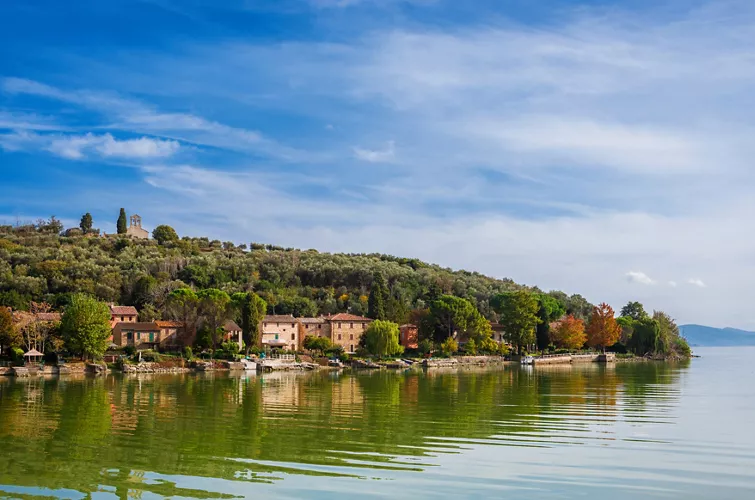
3. Lake Time at Lago Trasimeno
Rent a kayak, take a ferry to Isola Maggiore, or just sip Aperol on the waterfront. Less touristy than Lake Como, more soulful than you expect.
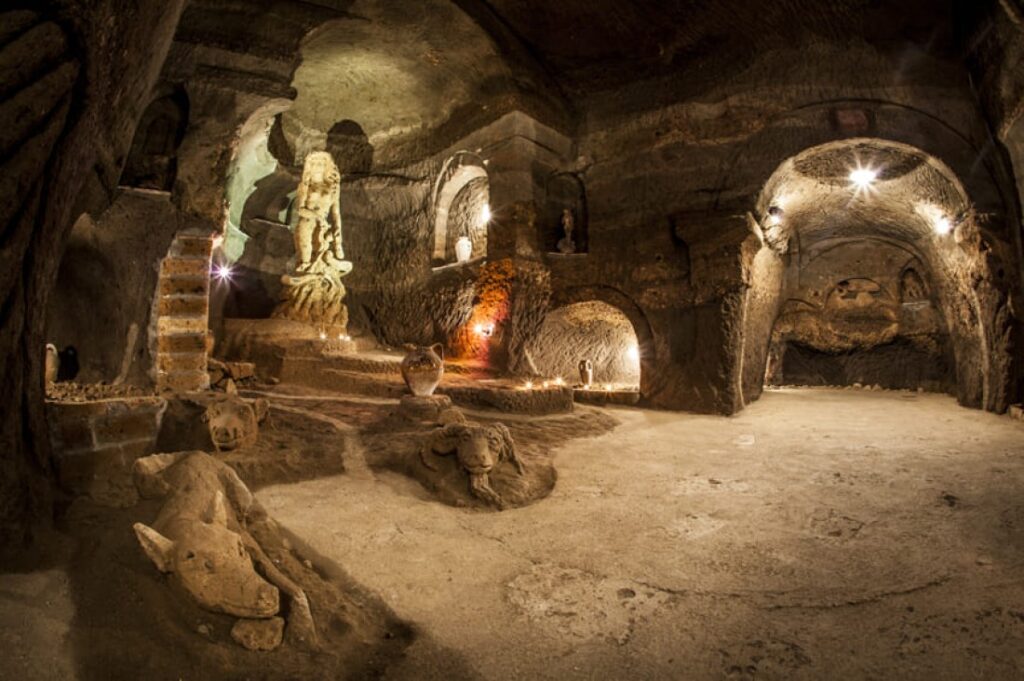
4. Explore the Underground of Orvieto
Above ground: Gothic cathedrals and wine bars. Below ground? An entire city carved into volcanic rock. 1,200 caves and tunnels. Yes, it’s as Indiana Jones as it sounds.
Don’t Miss: The Duomo’s frescoes by Luca Signorelli—some say they inspired Michelangelo’s Sistine Chapel.

5. Pilgrimage to Assisi
Even if you’re not spiritual, the vibe here is undeniable. The Basilica of St. Francis is both a religious site and a masterclass in medieval art.
Insider Tip: Visit at sunrise. The light on the stone is pure magic.
What to Eat in Umbria (And Where to Find It)
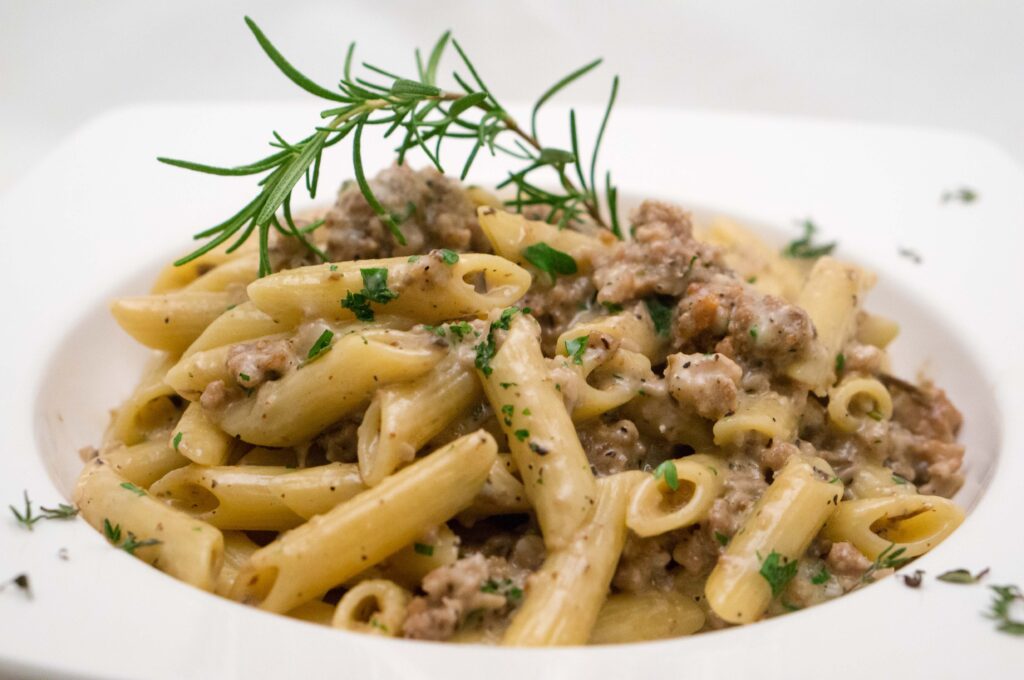
1. Pasta alla Norcina
Creamy, porky, peppery goodness. Pasta alla Norcina is Umbria on a plate. This indulgent dish blends crumbled local pork sausage with a rich cream sauce and often features a generous shaving of black truffles from the nearby hills.
It’s a hug in a bowl, especially in the colder months when you need something to warm your soul after a long day of wandering medieval alleyways.
Where to eat it:
Osteria Sensi in Norcia – small, unpretentious, and packed with locals. Ask for extra truffle.
Trattoria del Tempo Perso in Bevagna – the vibe is rustic-chic and the pasta is perfection.
Pair it with: A glass of Sagrantino di Montefalco to cut through the richness.
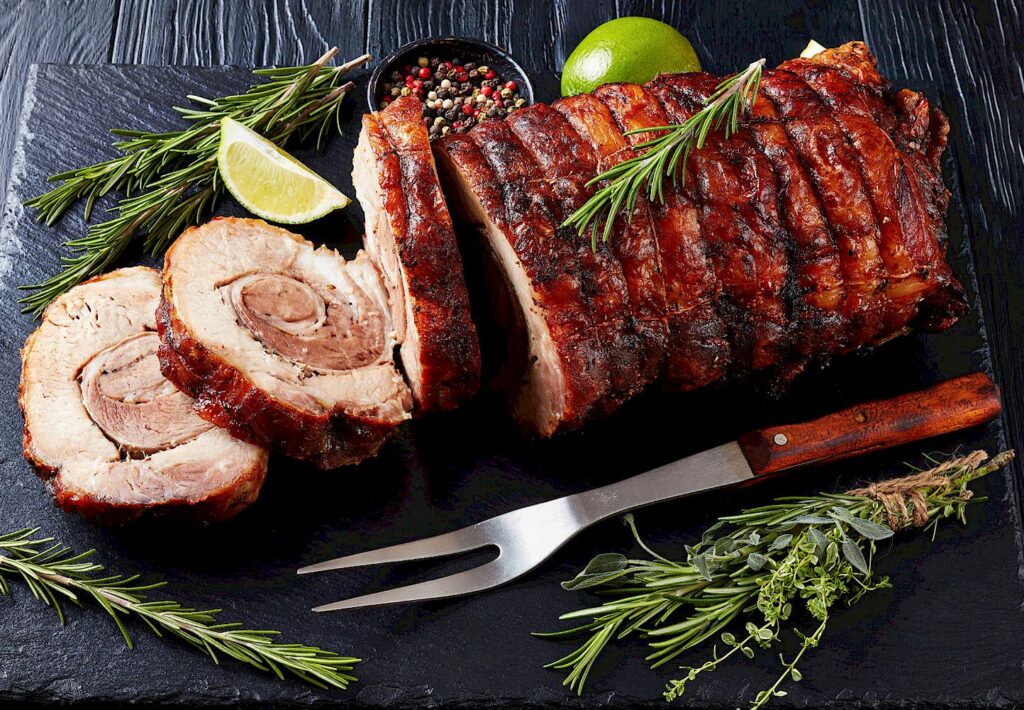
2. Porchetta
Porchetta is the king of Umbrian street food. A whole boneless pig, stuffed with garlic, rosemary, fennel, and other herbs, slow-roasted until the outside is crackling and the inside melts in your mouth.
It’s typically sliced and stuffed into a crusty panino. Perfect for grabbing on the go as you explore the winding alleys of a hill town.
Where to eat it:
The Sunday market in Todi – look for the longest line and follow your nose.
Montefalco’s street food stalls – especially during one of their many food festivals.
Local tip: Some stands will drizzle a little olive oil inside the sandwich. Always say yes.
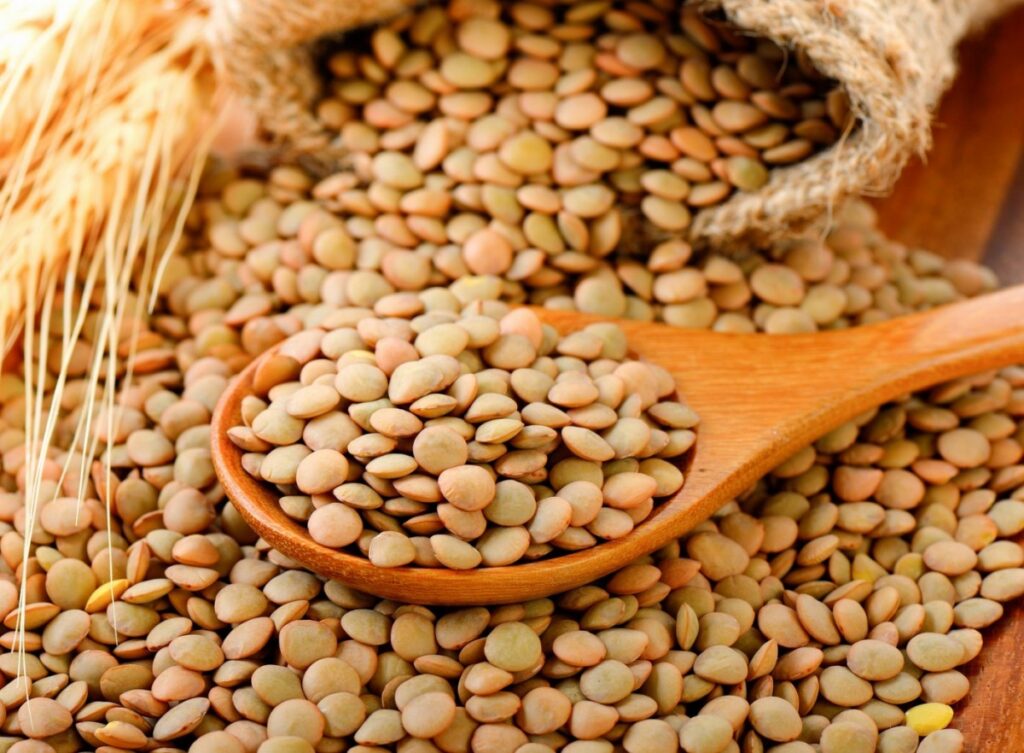
3. Umbrian Lentils (Lenticchie di Castelluccio)
These tiny legumes are a cornerstone of Umbrian cuisine and culture. Grown in the high plains of Castelluccio di Norcia—one of the most stunning landscapes in Italy—these lentils have a delicate flavor and cook quickly without turning mushy.
They’re served with sausage in a warming stew or featured in veggie-forward dishes that showcase their nutty flavor. Bonus: they’re packed with protein and fiber, making them a hit with vegetarians and health-conscious travelers.
Where to eat them:
Agriturismo Il Casale degli Amici near Norcia – farm-to-table magic.
Any osteria in the Norcia area will proudly list lentils on the menu.
Pro Tip: Buy a bag from a local shop to take home. They make an awesome souvenir.
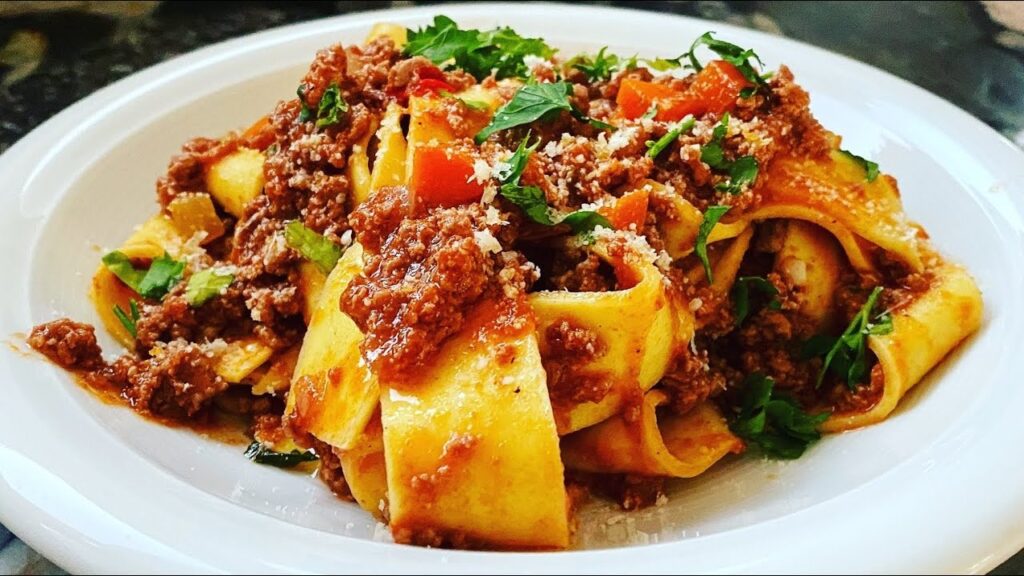
4. Wild Boar Ragu (Cinghiale)
If Umbria had a spirit animal, it would probably be the wild boar. Cinghiale is a beloved staple across the region and nowhere is it better than in a rich, slow-cooked ragu. The meat is marinated in red wine and herbs, then simmered for hours until it practically falls apart.
Served over pappardelle, tagliatelle, or creamy polenta, this dish is rustic, bold, and unforgettable.
Where to eat it:
Ristorante Il Pinturicchio in Spello – classy but not fussy, and the ragu is life-changing.
Locanda del Capitano in Montone – worth the detour.
What to drink: A bold red like a Montefalco Rosso or even a local Syrah.
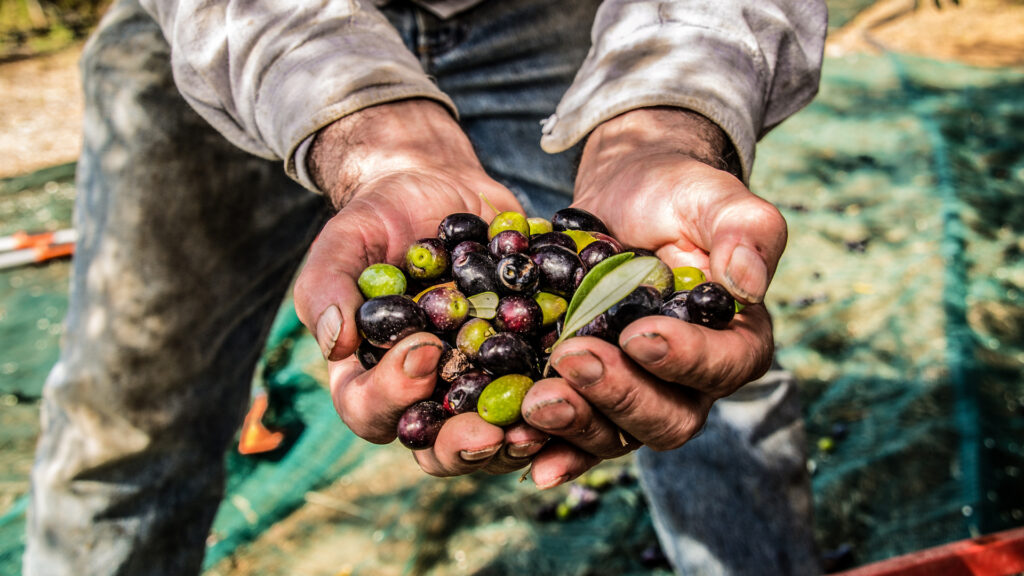
5. Olive Oil Everything
Umbrian olive oil isn’t just a condiment—it’s a way of life. The region’s climate and soil produce some of the most aromatic, peppery oils in the world. It’s green, intense, and utterly addictive.
You’ll find it drizzled over bruschetta, swirled into soups, and served in tiny bowls for dipping bread. Locals will tell you that the first olive oil of the season is practically a religious experience.
Where to taste it:
Frantoio Gaudenzi near Trevi – tour the mill, taste the oil, meet the family.
Frantoio Marfuga in Campello sul Clitunno – another award-winning producer.
Experience: Visit during the harvest (October–November) to see the olive presses in action and score a bottle of “olio nuovo” (new oil) while it’s still glowing green.
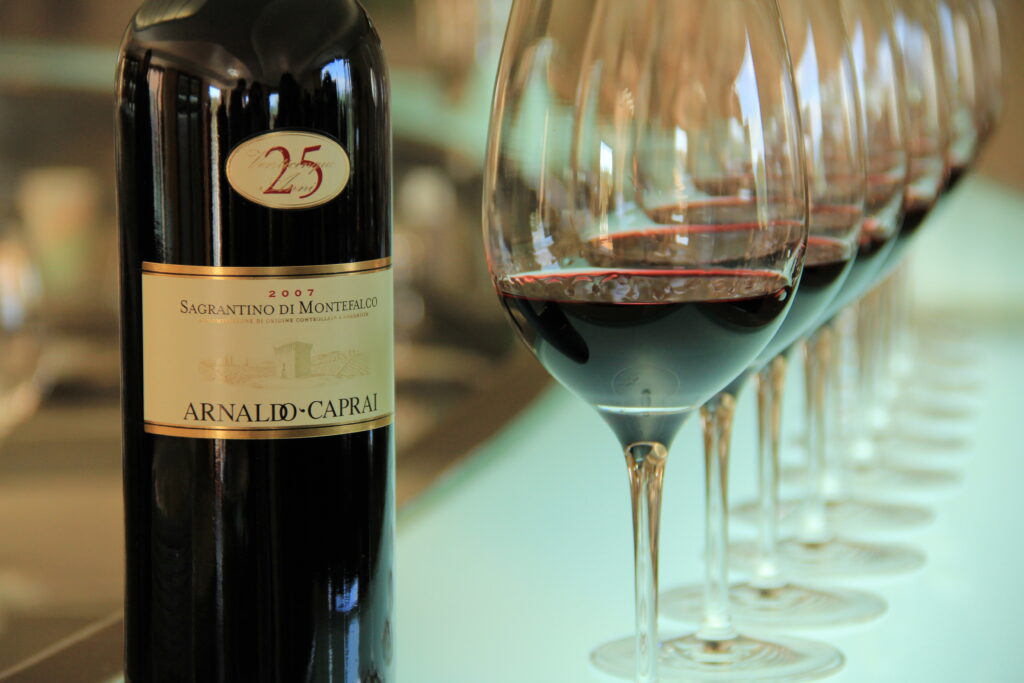
What to Sip
Sagrantino Wine in Montefalco
You haven’t had red wine until you’ve had Montefalco Sagrantino. This is not a wine for the faint-hearted. It’s bold, in-your-face, tannic enough to dry your tongue out in the best way possible, and complex enough to make you pause mid-sip and reconsider all your life choices (in a good way).
Grown exclusively in the Montefalco area, Sagrantino grapes produce some of Italy’s most powerful reds. These wines age beautifully, often spending years in oak barrels before ever seeing the inside of a bottle. The result? Deep ruby color, intense blackberry and plum flavors, and spice notes that feel like they came straight out of a medieval potion book.
This isn’t your “pizza night” wine. This is your “I just climbed a mountain and now I want to feel like royalty” wine. It pairs perfectly with Umbrian meat dishes like wild boar ragu, roasted lamb, or aged pecorino cheese.
Where to taste it:
Arnaldo Caprai – A pioneering producer who put Sagrantino on the map. Book a tasting and take the full vineyard tour to understand just how much love goes into each bottle.
Paolo Bea – For the wine geeks and natural wine lovers, Paolo Bea is legendary. Organic, biodynamic, minimal intervention—and max flavor. Each wine is a journey.
When to go: Fall harvest (September–October) is grape-stomping season and the wineries come alive with tastings, live music, and vineyard picnics.
Insider tip: Try the sweet passito version of Sagrantino—made by drying the grapes like raisins. It’s dessert wine with a serious backbone.

Grechetto
White wine lovers, rejoice. While Umbria is known for its bold reds, the local whites—especially Grechetto—are criminally underrated.
Grechetto is crisp, light-bodied, and surprisingly versatile. You’ll catch hints of pear, almond, white flowers, and a touch of citrus on the nose. It’s refreshing without being boring, structured without being heavy, and just aromatic enough to keep you intrigued.
This is the kind of wine you sip during a long lunch under a pergola covered in grapevines. It’s also the perfect pairing for local cheeses, grilled vegetables, lake fish, and anything involving olive oil and lemon.
Where to try it:
Enoteca Oberdan in Todi – Built into an ancient Roman cistern, this atmospheric spot is a favorite of locals and travelers alike. Their Grechetto selection is top-notch, and the ambiance is unbeatable.
Cantina Roccafiore near Todi – A modern winery in the hills with a killer view and a fresh, crisp Grechetto that might convert even the most die-hard red wine lover.
Wine with a view: Order a glass of Grechetto while watching the sun dip behind the Umbrian hills. It’s not just a drink—it’s a lifestyle.
Pro tip: Ask if they have an “orange” Grechetto—some winemakers are experimenting with skin-contact versions that add a layer of texture and funkiness. Perfect for sipping with a plate of porchetta or lentil salad.
Scenic Moments

1. Piani di Castelluccio in Bloom
Each spring and early summer, the high plains of Castelluccio di Norcia erupt into one of Europe’s most jaw-dropping natural spectacles. Known as the Fiorita, this explosion of color paints the landscape with vivid streaks of red poppies, indigo cornflowers, white daisies, and sunshine-yellow rapeseed.
Set against the backdrop of the majestic Sibillini Mountains, it feels less like a field and more like a dream. Photographers, painters, and travelers from all over the world come here to stand in awe—and take far too many photos.
Best time to visit: Late May through early July. Top tip: Rent a car and arrive early morning for misty, magical shots with no crowds.
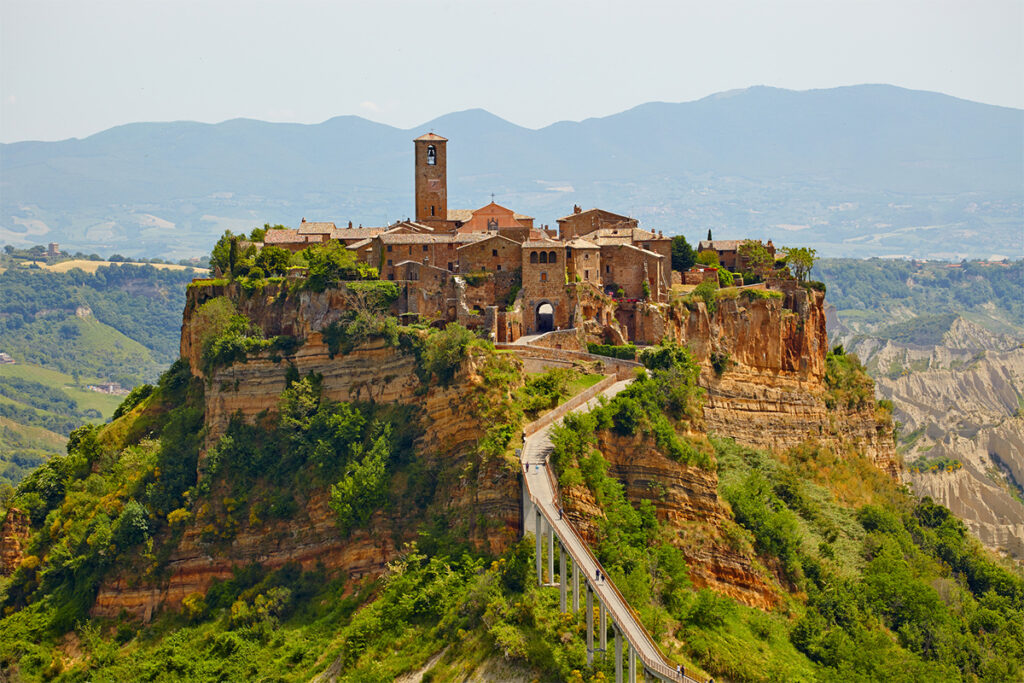
2. The View from Civita di Bagnoregio
Technically located just outside Umbria in Lazio, Civita di Bagnoregio is so close (and so unreal) that we’re claiming it anyway. This tiny hilltop village is perched atop a crumbling volcanic plateau and linked to the outside world by a pedestrian bridge that makes you feel like you’re walking into a fantasy novel.
Nicknamed “the dying town” due to ongoing erosion, Civita is anything but lifeless. The views from the village—especially at sunrise or sunset—are ethereal. The surrounding valley often fills with mist, making the village appear to float.
Pro tip: Stay overnight in town to experience its quiet magic after the day-trippers leave. Don’t miss: The tiny museum dedicated to the town’s geology and erosion battle. Nerdy, but surprisingly fascinating.
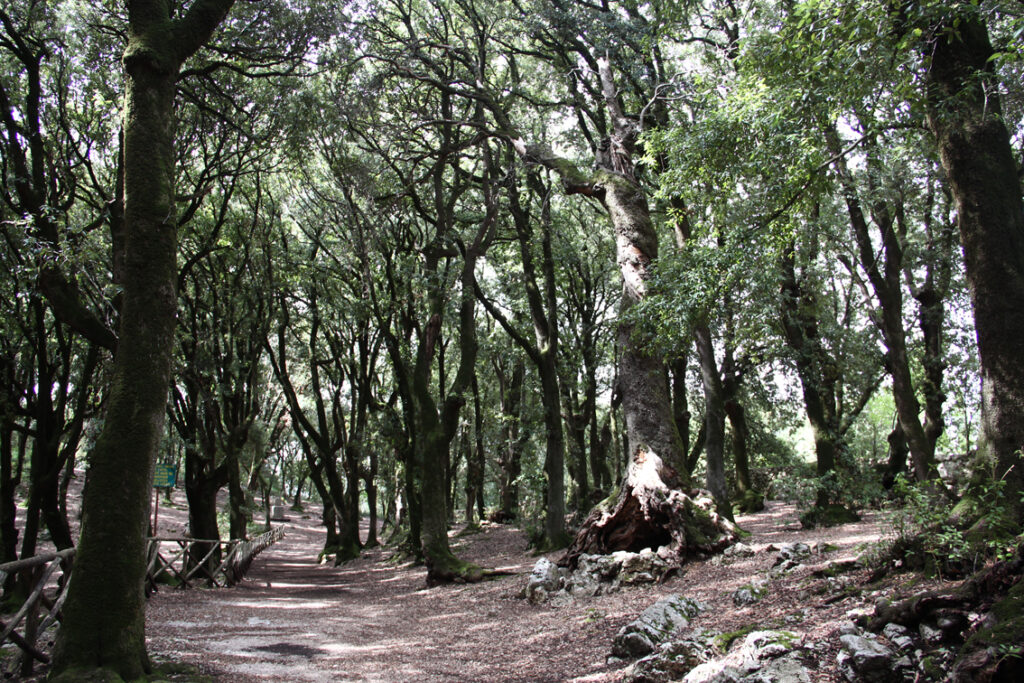
3. The Forest Trails of Monteluco
Just a short drive from Spoleto lies Monteluco, a sacred mountain covered in ancient oak and holm trees. This forest has been considered holy since Roman times and was later embraced by Franciscan monks for its serenity and spiritual energy.
Walking the trails here feels like stepping into another era. Cool mountain air, the scent of pine and moss, and the occasional chime of church bells drifting on the wind—it’s the perfect counterpoint to Umbria’s sun-baked piazzas.
What to do: Hike the Franciscan Path of Peace, visit the 13th-century hermitage of San Francesco, and bring a picnic for a forest-floor feast. Vibe: Total silence, dappled light, and a feeling like the forest is listening to your thoughts.
Local Travel Tips from Our Destination Experts
Time it right: Spring (May–June) and Fall (September–October) are peak magic. Avoid the August heat.
Don’t rush it: Umbria is all about slow travel. Skip the checklist. Spend time.
Rent a car: Public transport is limited. The best spots are often the hardest to reach.
Agriturismos are your best friend: These farm stays offer home-cooked meals, local tips, and a true Umbrian experience.
Come for the Silence, Stay for the Soul
Umbria isn’t flashy. It’s not trying to impress. It just is. And in a world where everything’s curated and filtered, that authenticity hits different. If you’re ready to travel slower, eat deeper, and connect harder Umbria is your new best friend…